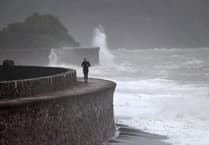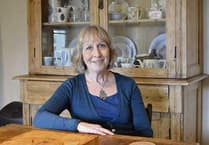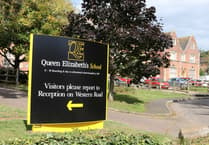MEMBERS of Thorverton History Society were delighted to welcome Robert Hesketh, a freelance writer and photographer with a strong interest in local history, to speak to us on Friday, March 24.
He has published more than 60 Devon, Dorset and Somerset titles and written numerous illustrated articles for "Dartmoor Magazine", "The Countryman", "Country Walking" and other publications as well as contributing photographs of West Country landscape and people.
His subject of choice for our talk, to a welcoming turnout, was the origin and meaning of Devon place names and their close relationship to the topography, history and evolution of our places, language and people.
Every Devon place name has a story to tell and usually a very old story going back over 1,000 years.
They reflect both our landscape and our heritage and can sometimes indicate successive layers of conquest and settlement.
In Cornwall, Celtic names prevail, however, Old English and Saxon dominate as you travel East, where we have a rich tapestry woven from Old English, Old Norse, Latin, Norman, French and British within the county.
The benchmark for place name studies relies on the Domesday Book, the great survey of the newly conquered kingdom commissioned by William I in 1086, but many other charters, Church documents and chronicles have helped too.
Some names inevitably remain disputed and uncertain!
An ongoing study is available at: https://epns.nottingham.ac.uk/ as well as Robert’s own invaluable book.
Robert began by explaining the settlement of Saxons onto the British territory and how the use of British is largely confined to natural features - more than a quarter of Devon’s rivers have British names such as the Axe, Exe and Yeo (meaning water), Torridge (rough stream), Teign (stream) and Taw (strong or silent stream).
Although Rome conquered most of Britain, including Devon, the administration rarely changed the existing place names and examples usually come from medieval scribes such as for Buckland Monachorum (book land - granted by charter, of the monks) and our own Exeter (Fortified Roman settlement on the Exe).
Even the Vikings made little impression on us except for the raiding points on the coast such as Lundy (Puffin Island) and Oldstone (Ulf’s farm).
The Norman Conquest began the last major phase of naming and most reflect powerful feudal families joined to earlier names such as Bovey Tracey (Bovey being river and the de Tracey family) and Stockleigh Pomeroy (tree stump clearing held by the de Pomerei family).
Only a few names are very modern: Devonport was renamed by royal permission in 1824 for example and Westward Ho! was named after Charles Kingsley’s novel in 1855.
Robert gave us so many examples of the common constituent parts of many names…too many to record… and some which are left to us to remind us of the personal names of people now forgotten, such as Countess Wear (named after Countess Isabella de Fortibus, Countess of Devon who constructed a wear across the Exe in 1286), Lympstone (Leofwine’s farm), Topsham (Topp’s hemmed in land), Bickleigh (possibly Bica’s woodland clearing) and our own Thorverton (a farmstead by a ford, marked by a thorn tree or Thurferth’s farmstead).
This was an evening full of information and yet another facet and perspective on the making of our landscape.
Recorded by Ann Marshall





Comments
This article has no comments yet. Be the first to leave a comment.